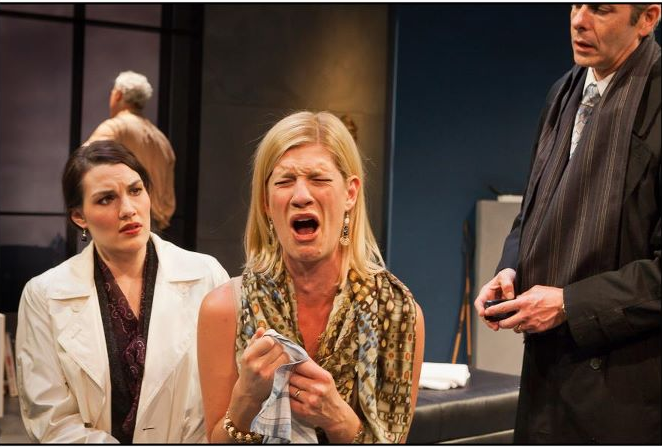
By Bob Hicks
With PICA’s TBA new-arts fest, Music Fest NW and the kickoff of the regular fall arts season, it was a hectic weekend in Puddletown. So Marty Hughley, The Oregonian’s ace theater and dance guy, asked me to pitch in and review God of Carnage, Yasmina Reza‘s little free-for-all at Artists Rep. Not a bad assignment, all in all. Funny what a little playground punch between kids can turn into when the adults get involved. My brief print review is in this morning’s paper. You can read the more expansive online version at Oregon Live.
Barry Johnson has also filed his review at Oregon Arts Watch, and Willamette Week’s Ben Waterhouse shouldn’t be far behind: He was in the house on Saturday night.
*
My old friend Bernie Weiner was a longtime theater critic for the San Francisco Chronicle, and, as the salesmen say in The Music Man, he knows the territory. So when he takes time out to send a tip, I pay attention.
This is what he sent the other day: not sure if you’ve ever seen dan hoyle perform (he’s geoff hoyle’s son), but he’s wonderful. just in case you’re interested, he’ll be doing his “real americans” show (based on conversations he had with ordinary americans, not all of whom were friendly) in portland 9/6-11-6.
The Real Americans also opened over the weekend, at Portland Center Stage. Rich Wattenberg’s review for The Oregonian is here.
I’d known this show was coming up and figured I’d catch it, but I didn’t know Dan Hoyle was Geoff Hoyle’s son. Geoff is a veteran physical-theater guy who’s maybe best-known for his stretches in Cirque du Soleil and as the original Zazu in the Broadway version of The Lion King. But I remember him best, and most fondly, as the clown Mister Sniff, one of the lynchpins with Bill Irwin of the funky and magnificent Pickle Family Circus, which both Bernie and I covered many years ago (Bernie more often, because the Pickles were part of the San Francisco home team). The splendor of Cirque du Soleil more or less killed popular interest in the Pickles, who were a quasi-hippie, quasi-touring European acrobatic troupe. But I absolutely loved the Pickles’ spirit, which was: be amazed by what’s right in front of your face. (Several Pickles, by the way, including Hoyle, Irwin, and fellow clown Larry Pisoni, played townsfolk in Robert Altman’s idiosyncratic movie version of Popeye.)
*
Also from The Oregonian, I ran this review on Friday of Tamarind Touchstones, an exhibition of 61 lithographic prints made over the past half-century by the Tamarind Institute, which began in Los Angeles and moved in 1970 to Albuquerque. It’s a very good show, with work by people you know (Josef Albers, Roy De Forest, Kiki Smith, Louise Nevelson, Robert Colescott, Richard Diebenkorn, Jim Dine, Ed Ruscha) and probably a few you don’t. It’s in the prints and drawings galleries downstairs from the main entrance, and it’s worth your time.
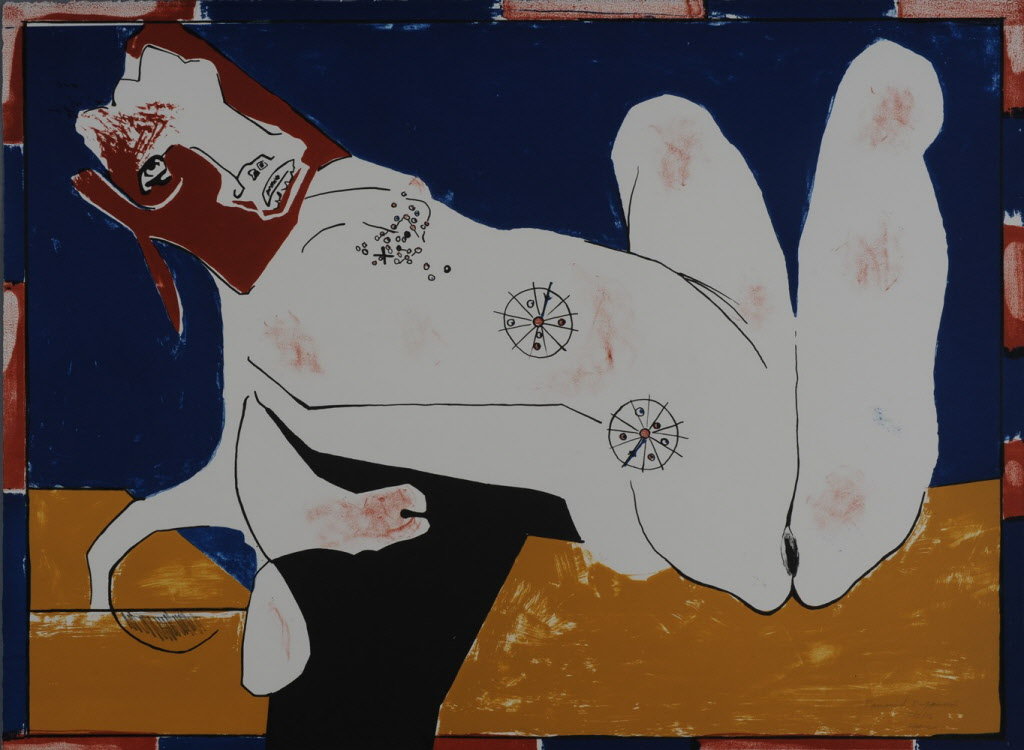
PHOTOS, from top:
- From left: Trisha Miller, Patrick Dizney (background), Allison Tigard and Michael Mendelson in “God of Carnage” at Artists Rep. Photo: Owen Carey.
- David Hare, “Cronus Hermaphrodite,” 1972. “Tamarind Touchstones” at Portland Art Museum. Courtesy Tamarind Institute.
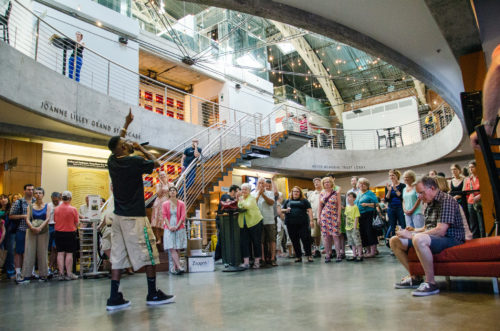
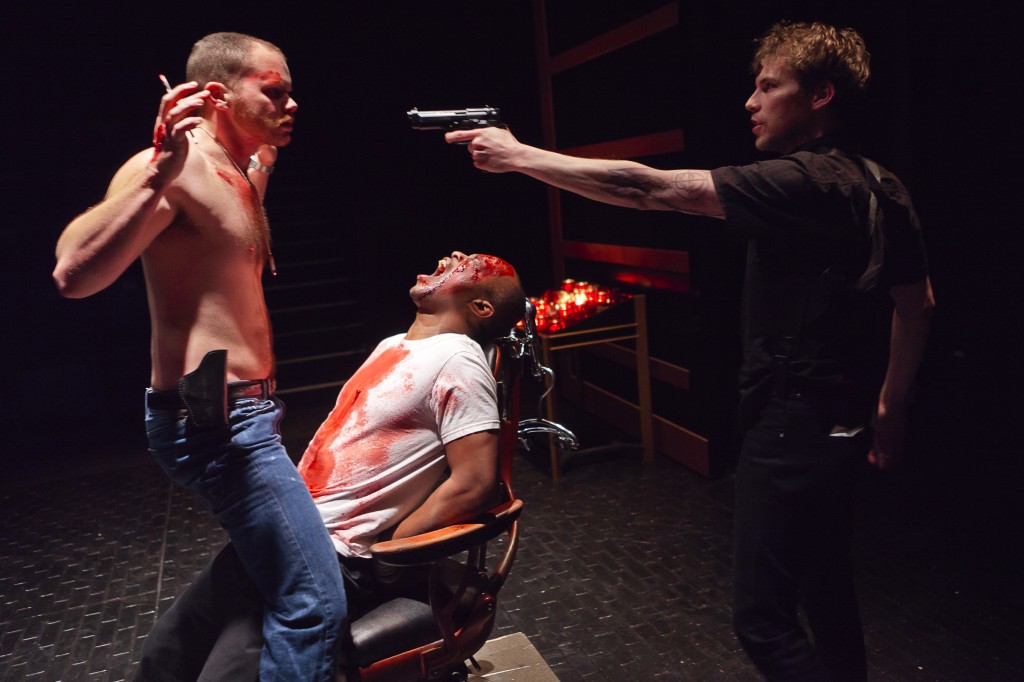
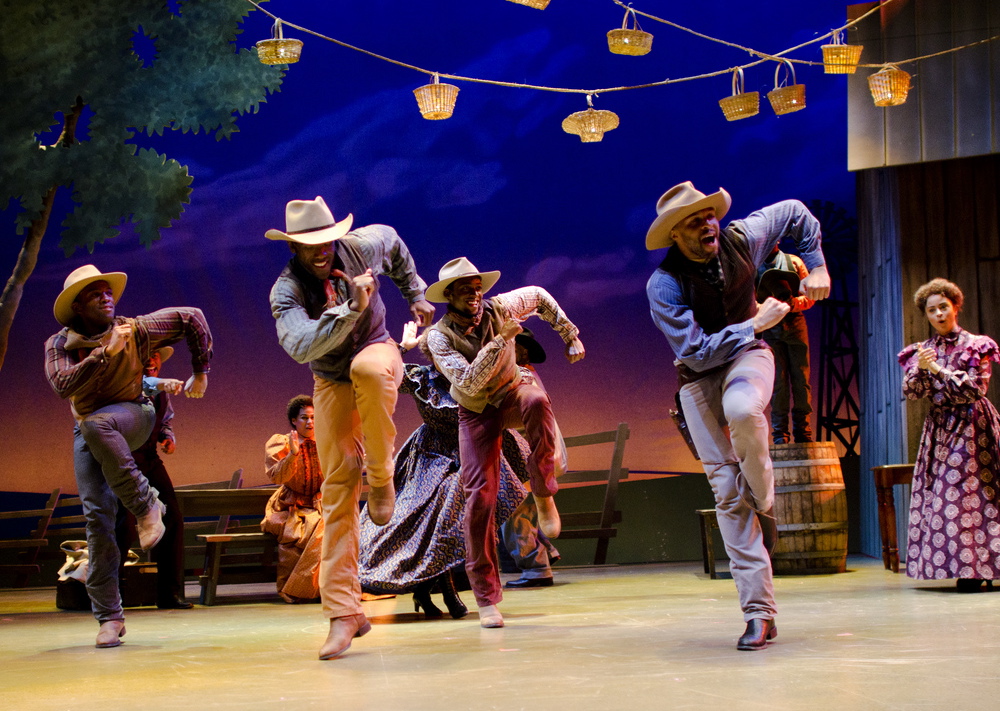 Patrick Weishampel
Patrick Weishampel


 Portland Taiko. Rich Iwasaki/2009
Portland Taiko. Rich Iwasaki/2009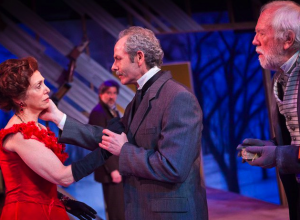 There isn’t much story to The Cherry Orchard, but there are themes, counter-themes, motifs. It’s chamber music, and the way we hear it can be startlingly different from production to production, depending not just on our own life experiences (interpreting Chekhov relies to an extreme on what the audience brings to it) but also on the emphases of interpretation on the stage: Do we concentrate on the cello tonight, or the bassoon? In truth, I suspect that even more so than ordinarily, every member of the audience sees a different play when watching Chekhov.
There isn’t much story to The Cherry Orchard, but there are themes, counter-themes, motifs. It’s chamber music, and the way we hear it can be startlingly different from production to production, depending not just on our own life experiences (interpreting Chekhov relies to an extreme on what the audience brings to it) but also on the emphases of interpretation on the stage: Do we concentrate on the cello tonight, or the bassoon? In truth, I suspect that even more so than ordinarily, every member of the audience sees a different play when watching Chekhov. And on the second morning he got up, made coffee, and wrote his review, which was subsequently published (the review, not the coffee) in The Oregonian. And the review praised some and quibbled some, and was not, in the terminology of the great god Variety, boffo.
And on the second morning he got up, made coffee, and wrote his review, which was subsequently published (the review, not the coffee) in The Oregonian. And the review praised some and quibbled some, and was not, in the terminology of the great god Variety, boffo.
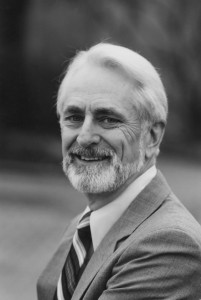 The mythology of the festival is that actor/director/artistic leader Angus Bowmer was the founding visionary, and he was. It was Bowmer who got things going in 1935, and when I began to go to the festival in the late 1960s and 1970s he was still around, still a quiet eminence, still a prominent spirit around the place.
The mythology of the festival is that actor/director/artistic leader Angus Bowmer was the founding visionary, and he was. It was Bowmer who got things going in 1935, and when I began to go to the festival in the late 1960s and 1970s he was still around, still a quiet eminence, still a prominent spirit around the place.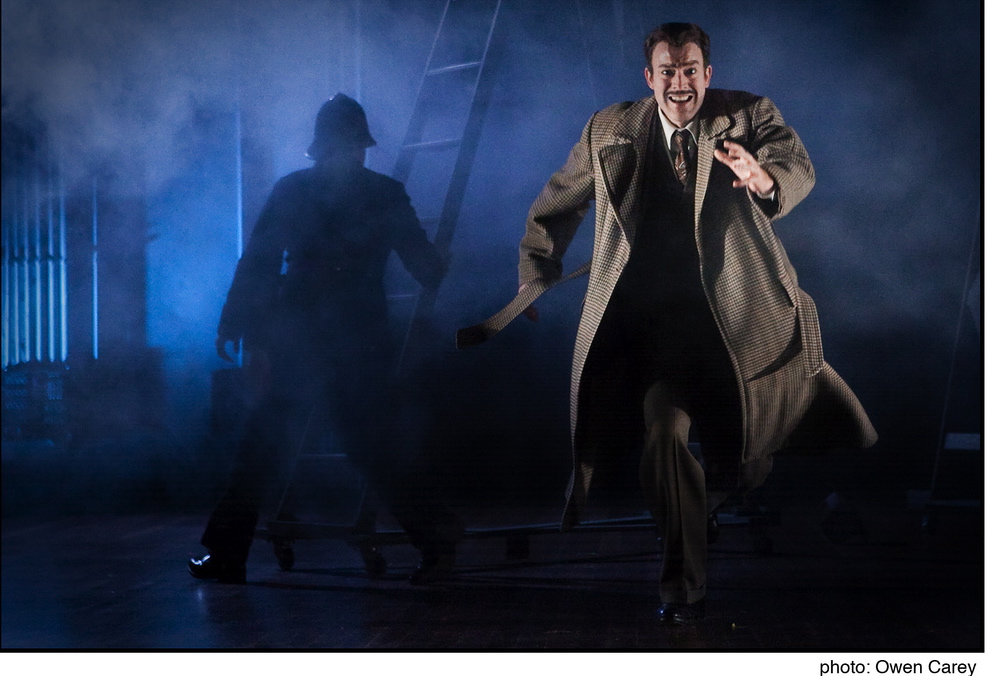
 Then, at midday Friday, the Scatter duo showed up at the Gerding Theater in the Armory to see dancer Linda Austin and her cohort J.P. Jenkins tear up the joint with a fascinating visual, musical and movement response to Mark Applebaum‘s elegant series of notational panels, The Metaphysics of Notation, which has been ringing the mezzanine railings above the Gerding lobby for the past month. Every Friday at noon someone has been interpreting this extremely open-ended score, and this was the final exploration. California composer Applebaum will be one of the featured artists this Friday at the Hollywood Theatre in the latest concert by
Then, at midday Friday, the Scatter duo showed up at the Gerding Theater in the Armory to see dancer Linda Austin and her cohort J.P. Jenkins tear up the joint with a fascinating visual, musical and movement response to Mark Applebaum‘s elegant series of notational panels, The Metaphysics of Notation, which has been ringing the mezzanine railings above the Gerding lobby for the past month. Every Friday at noon someone has been interpreting this extremely open-ended score, and this was the final exploration. California composer Applebaum will be one of the featured artists this Friday at the Hollywood Theatre in the latest concert by